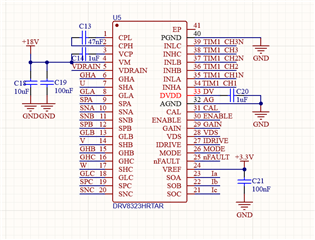Hi team,
Here's an issue from the customer may need your help:
Is it essential to distinguish between analogue and digital grounds? Is it OK to use only one GND? Here're 2 ways as below:
1) Only one GND, no agnd and pgnd. Is it affecting sampling?

2) With the analogue and protective grounds, the schematic is as follows:

Does it have a significant impact on the results without distinguishing between digital and analogue? Both GND and AGND, 3.3 V and AVCC are connected through a 0 ohm resistor.
Could you help check this case? Thanks.
Best Regards,
Cherry

